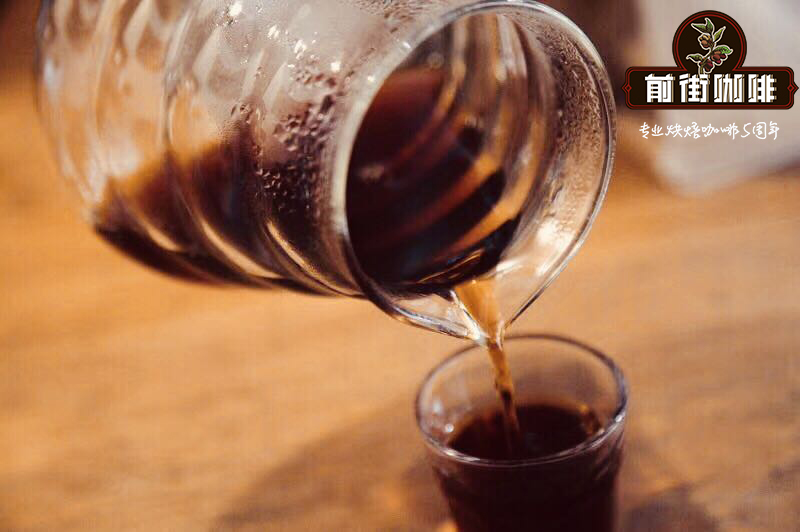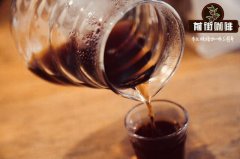There are several processing methods of coffee beans. Water washing is clean, pure and free of impurities.

Professional coffee knowledge exchange more coffee bean information please follow the coffee workshop (Wechat official account cafe_style)
A brief introduction to the three treatments of Qianjie-coffee
Dry process/Natural method is the oldest and most primitive treatment of coffee beans. Arabs used this method to deal with coffee more than a thousand years ago. The harvested coffee cherries are directly exposed to the sun on the terrace and receive direct sunlight exposure (about 27-30 days). The moisture content is changed from 60% to only 12%. The concept of this method is very simple and inexpensive, but it has a lot of variables and risks. It has been used for a long time to deal with beans that are not of such good quality.
Flavor: soft acidity and uniform bitterness, thick, rich layers, obvious sweetness. Good quality sun beans will have a fruity or wine flavor.
Sun drying: put the fresh coffee fruit in the exposure area to dry, after about 2 to 4 weeks of constant turning to dry until the water content is about 12%. Heat the coffee cherries evenly. After drying, the core and skin of the coffee will be separated, and then the pulp and peel will be removed by a sheller. And so on, the screening is completed.
Water washing is a technology invented by the Dutch in the 18th century. It is suitable for rainy areas. Although the process is quite tedious, it is currently a more common method of raw bean treatment, accounting for about 70% of the total coffee. Use a peeling machine to separate most of the pulp from the coffee beans, then guide the shelled beans to a clean sink, soak them in water and ferment to thoroughly remove the residual pulp layer. Through water treatment, unripe beans and defective beans are selected because of buoyancy, and the fermentation process is easier to control, so the flavor is not mixed like sun beans, but shows obvious acidity, complexity and cleanliness (without any negative flavor, such as astringency or sharpness). But it is also because it is too "clean" and the richness of the flavor is a little weaker.
The flavor shows: the acidity is strong, and the taste is clean, fresh and bright.
Sift out floating beans: rinse the coffee fruit with clean water and remove the immature fruit that floats on the surface. Remove the pulp: the fresh fruit is sent to the pulp sieving machine for peel and pulp removal. Pectin removal: after removing the pulp, the seeds are moved into the fermentation tank, after about 16 to 36 hours of natural fermentation, dissolve the surface pectin and then wash. Dry shelling: keep exposed to the sun for 1-3 weeks to reduce the water content to 12%, and then remove the shell with a sheller.
Honey treatment (Honey Process/Miel Process)
The meaning of honey treatment comes from the sticky pectin layer of coffee beans before exposure, which feels as sticky as honey. when the coffee pulp is separated from the coffee beans, the outer coated pectin layer is exposed, absorbing moisture in the air and making the pectin layer sticky. The "honey" here refers to the mucous layer of coffee pulp. After harvest, the fruit will peel off the outer skin with a peel machine, leaving the flesh to be exposed to the sun, so that the sweetness of the pulp can enter the beans, without having to spend as long as the sun method.
The flavor shows: low acidity, high sweetness, fruity aroma, cleaner taste than sun beans, and a fermented wine finish after drying. Peel off: after washing the coffee fruit with clean water, remove the peel and leave the flesh to dry in the sun: keep the sugary pulp exposed together. At this stage, you must stir the parts to avoid mildew of raw beans. Get raw beans: remove pulp, pectin and shell at once after drying.
Knowledge: Brazilian coffee has neither outstanding advantages nor obvious shortcomings. it has a mild taste, low acidity, moderate mellowness, light sweetness and chocolate flavor.
In short: Qianjie is a coffee research hall, happy to share the knowledge about coffee with you, we share unreservedly just to make more friends fall in love with coffee, and there will be three low-discount coffee activities every month. The reason is that Qianjie wants to make more friends drink the best coffee at the lowest price, which has been Qianjie's tenet for 6 years!
END
Important Notice :
前街咖啡 FrontStreet Coffee has moved to new addredd:
FrontStreet Coffee Address: 315,Donghua East Road,GuangZhou
Tel:020 38364473
- Prev

Three major coffee bean processing methods Introduction Coffee bean washing method characteristics Clean and pure water spirit
Professional coffee knowledge exchange More coffee bean information Please pay attention to coffee workshop (Weixin Official Accounts cafe_style) Front Street-Introduction to the three major coffee processing methods We know that each single coffee has a unique regional flavor, and the flavor of coffee beans, in addition to environmental conditions, varieties, planting technology, the most immediate way to create personalized flavor should be the process.
- Next

Brazil Bau Estate IPR-99, a coffee bean producing country in South America
Professional coffee knowledge exchange More coffee bean information Please pay attention to coffee workshop (Weixin Official Accounts cafe_style) Front Street-Brazil Bau Manor IPR-99 Special Variety Sunlight Introduction In 1727, Brazil was still under Portugal rule, and the governor of Guyane française invited Francis Di Melo-Paletta, a Brazilian official in Portugal territory, to help resolve the border dispute. According to legend,
Related
- Beginners will see the "Coffee pull flower" guide!
- What is the difference between ice blog purified milk and ordinary milk coffee?
- Why is the Philippines the largest producer of crops in Liberia?
- For coffee extraction, should the fine powder be retained?
- How does extracted espresso fill pressed powder? How much strength does it take to press the powder?
- How to make jasmine cold extract coffee? Is the jasmine + latte good?
- Will this little toy really make the coffee taste better? How does Lily Drip affect coffee extraction?
- Will the action of slapping the filter cup also affect coffee extraction?
- What's the difference between powder-to-water ratio and powder-to-liquid ratio?
- What is the Ethiopian local species? What does it have to do with Heirloom native species?

